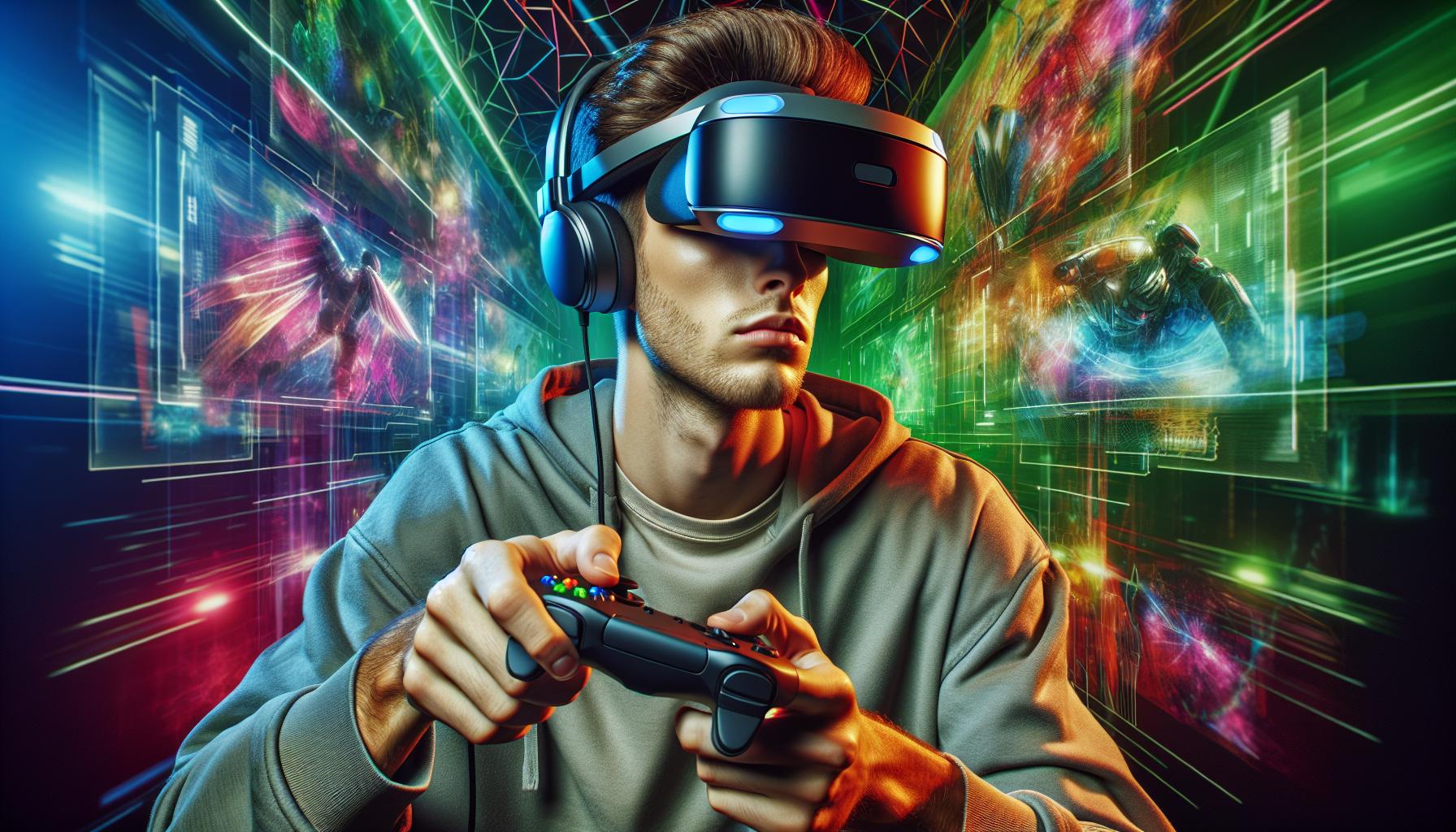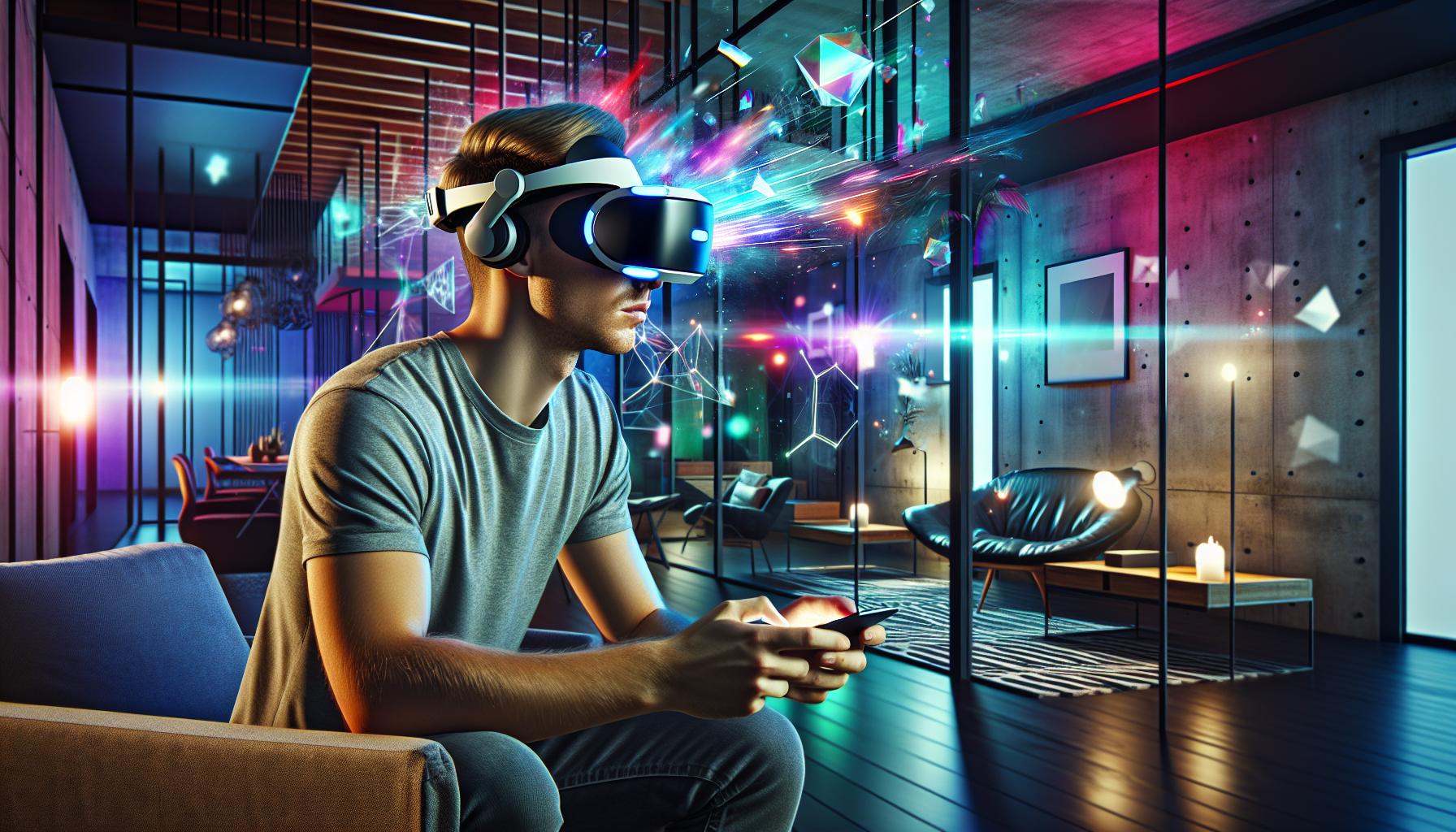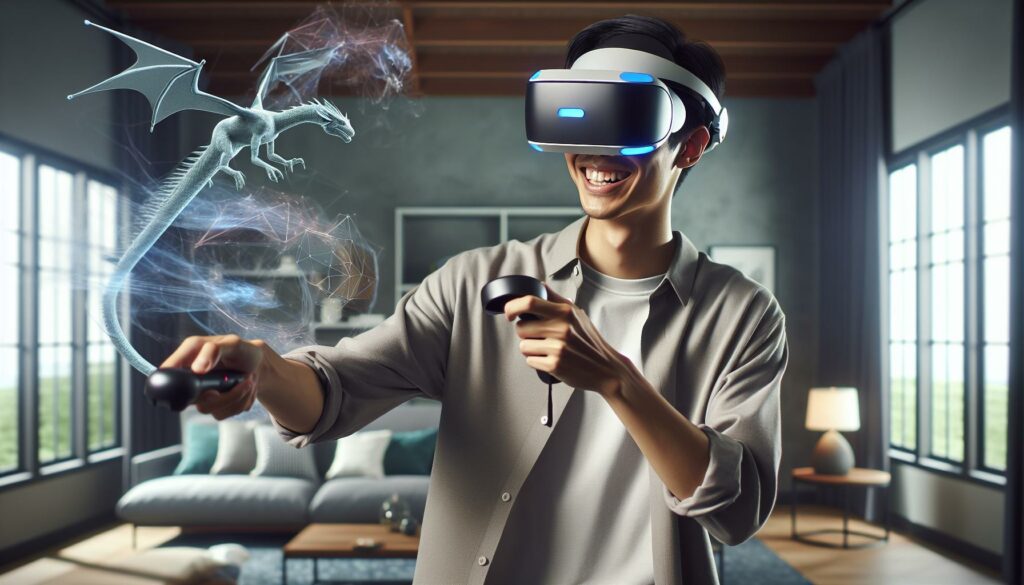Imagine diving into a world where dragons roam and aliens invade, all from the comfort of your living room. Augmented reality gaming makes this possible, transforming everyday spaces into epic battlegrounds. With the right hardware—think headsets that fit snugly like a favorite cap, controllers that feel like an extension of your hand, and motion sensors that track your every move—players can step into a universe where the impossible becomes reality.
Gone are the days of staring at a screen and wishing for adventure. With augmented reality, players can literally dodge virtual fireballs while sipping their coffee. This blend of technology and imagination isn’t just fun; it’s a revolution in how games are played. So gear up and get ready to unleash your inner hero, because the only thing standing between you and your next epic quest is the right set of AR gear.
Augmented Reality Gaming Hardware Includes a Headset, a Controller, and Motion sensors.
Augmented reality gaming combines real-world environments with interactive virtual elements. Headsets play a crucial role in this experience by providing immersive visuals and comfortable fit for extended play. Comfortable headsets frequently support a wide field of view and high-resolution displays, enhancing player engagement.
Controllers add another dimension to gameplay by allowing users to interact with digital objects. These devices often feature motion tracking and haptic feedback, making actions feel realistic and intuitive. Users manipulate their surroundings using gestures, leading to dynamic interactions that traditional gaming cannot replicate.
Motion sensors track players’ movements and provide real-time data on their positions. These sensors enable seamless integration between the user and the game, ensuring that virtual elements respond accurately to physical actions. Advanced motion sensors enhance realism, allowing players to dodge virtual obstacles or perform complex maneuvers with ease.
Together, these hardware components create an engaging experience that blurs the line between reality and the virtual world. Each piece of hardware contributes to this immersive environment, establishing an unprecedented level of interaction. Players can explore new dimensions of gaming, transforming ordinary spaces into thrilling adventures filled with challenges and rewards.
Augmented reality gaming hardware continually evolves, focusing on enhancing user experiences and expanding possibilities. Developers inspire innovation around these devices, leading to groundbreaking advancements that redefine entertainment. This evolution invites players to engage with their environments in ways that were previously unimaginable.
Key Components of Augmented Reality Gaming Hardware

Understanding the key components of augmented reality gaming hardware is essential for maximizing the immersive experience. These components include headsets, controllers, and motion sensors, each contributing significantly to gameplay.
Headset Features and Functionality
Headsets play a critical role in augmented reality gaming. High-resolution displays enhance visuals, providing clear and vibrant images. Wide fields of view create a more immersive environment, allowing users to see virtual elements alongside their real surroundings. Comfortable designs encourage long play sessions without causing fatigue. Integrated audio systems improve engagement by delivering spatial sound matching the visuals. Additionally, user-friendly interfaces offer easy access to settings and features, enhancing overall convenience.
Controller Design and User Experience
Controllers enhance user interaction within Augmented Reality Gaming Hardware Includes a Headset, a Controller, and Motion sensors.. Ergonomic designs ensure comfort during extended gameplay sessions. Intuitive button layouts allow for quick access to actions, providing seamless control. Motion tracking capabilities enable precision movements, making it easier for players to manipulate digital objects. Haptic feedback creates a tactile experience, bringing in-game actions to life. Wireless connectivity promotes flexibility, allowing users to move freely without being tethered to their systems.
Importance of Motion Sensors
Motion sensors are vital for tracking player movements in real time. They capture gestures and actions, enabling seamless integration between players and the game. This technology supports 3D spatial awareness, allowing users to walk around and interact with virtual elements. Enhanced accuracy from advanced sensors results in smoother gameplay, minimizing lag or misinterpretations. Ultimately, these sensors elevate the realism of augmented reality experiences, making interactions feel natural and intuitive.
Popular Augmented Reality Gaming Hardware Examples

Various augmented reality gaming hardware options enhance immersive experiences. Players benefit from high-quality headsets, advanced controllers, and cutting-edge motion sensors.
In-Depth Review of Leading Headsets
Leading AR headsets offer remarkable features for enhancing gameplay. The Microsoft HoloLens 2 stands out with its impressive field of view and exceptional visual clarity. Another option, the Magic Leap One, boasts lightweight design and spatial tracking capabilities that elevate user interaction. The PlayStation VR2 brings immersive visuals and 3D audio to the gaming experience, creating a sense of presence in virtual environments. Each headset provides unique strengths, catering to diverse gaming preferences and scenarios.
Top Controllers on the Market
Top controllers play a pivotal role in augmented reality gaming. The Oculus Touch controller delivers intuitive tracking, enabling natural interaction with digital objects. Another popular choice is the Valve Index controller, which features finger tracking for enhanced realism. The Razer Hydra provides precise motion tracking, offering players a unique experience with responsive feedback. These controllers prioritize comfort and usability, ensuring gamers stay engaged and in control throughout their adventures.
Motion Sensor Technology Innovations
Recent innovations in motion sensor technology significantly impact AR gaming. The Leap Motion Controller allows for rapid, precise hand-tracking, enabling seamless interaction with virtual environments. Additionally, the Microsoft Kinect uses skeletal tracking to capture players’ movements, translating them into the game in real-time. Advanced sensors continue to enhance game realism by capturing intricate gestures and actions. These technological advancements contribute to a more immersive gaming experience that bridges the gap between reality and virtual elements.
Future Trends in Augmented Reality Gaming Hardware

Innovations in augmented reality gaming hardware are set to redefine player experiences. Emerging headsets focus on increasing field of view while minimizing weight for enhanced comfort during extended gameplay sessions. Notable advancements in display technology, such as OLED screens, provide richer colors and deeper contrasts, making gaming environments more vibrant.
Developments in controllers aim to improve immersion through advanced haptic feedback systems. These systems allow users to feel textures and impacts from virtual objects, heightening the sense of reality in gameplay. Ergonomic designs continue to evolve, ensuring comfort during lengthy gaming sessions, accommodating diverse hand sizes and preferences.
Motion sensors also see significant improvements, with increased precision in tracking player movements. New technologies incorporate AI algorithms to better interpret gestures and enhance interaction with digital elements. Future sensors may integrate seamlessly into environments, converting any space into a gaming arena without the need for additional markers or equipment.
Wireless technology expands its role in AR gaming, offering players freedom from tangled cords and obstructions. Wireless headsets enable unhindered movement, which enhances the overall gaming experience. Additionally, battery life improvements allow for longer gaming sessions without interruptions, keeping players engaged longer.
Collaboration between hardware manufacturers and software developers focuses on creating cross-platform compatibility. This trend boosts the accessibility of AR gaming, permitting users to enjoy their favorite titles across various devices. As these technologies converge, the potential for unique gaming experiences grows exponentially, paving the way for innovative gameplay elements and interactive adventures.
Headsets Controllers
The evolution of augmented reality gaming hardware is reshaping how players engage with their environments. With advancements in headsets controllers and motion sensors the gaming experience becomes more immersive and interactive. As technology continues to progress the potential for deeper connections between players and virtual worlds will only expand.
Investing in quality hardware not only enhances gameplay but also opens up new realms of adventure. As AR gaming gains traction the future promises even more innovative developments that will redefine entertainment and interaction. Embracing these changes will allow players to fully experience the magic of augmented reality.

